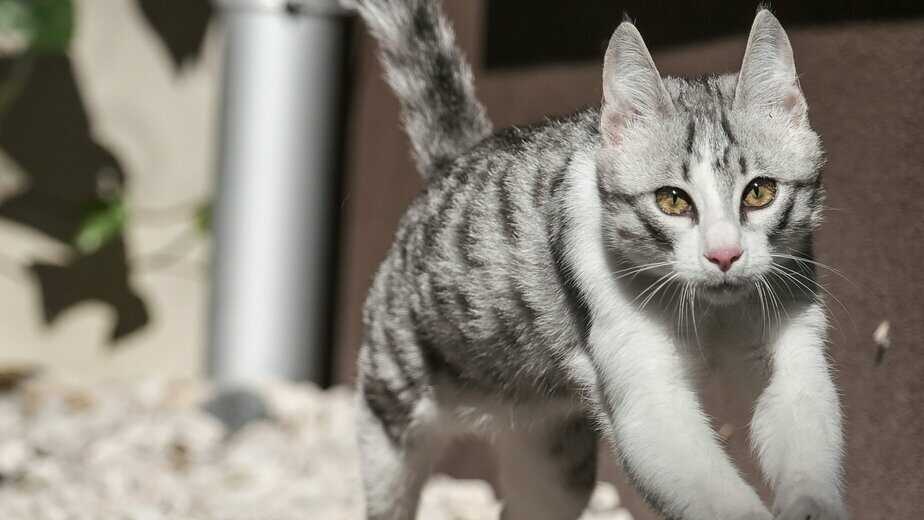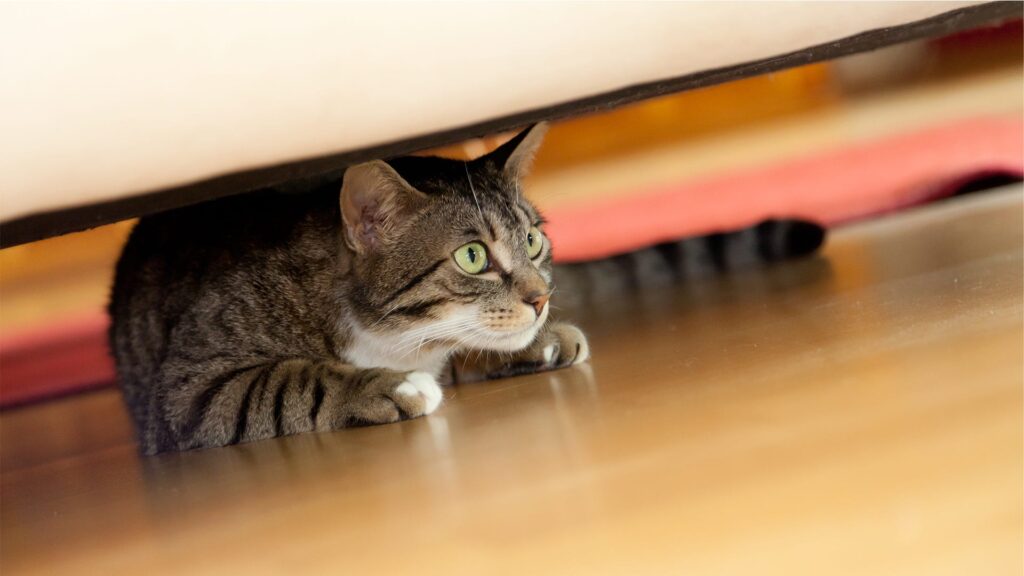Is your cat peeing on the bathroom rug? Read this “unhappee” story to find out the cause and solution.
A common problem that many cat owners face is finding their furry friends using the bathroom rug as a substitute for the litter box. This behavior can be frustrating and confusing, leaving you wondering why your cat is acting out in such a way.
We’ll explore the possible reasons behind this unwanted behavior and offer effective solutions to stop it. By understanding the root cause and implementing the right strategies, you can establish a clean and harmonious bathroom environment for both you and your feline friend. So let’s dive in and solve this “unhappee” issue once and for all!
Contents
Possible Reasons
Is your cat peeing on the bathroom rug? There could be several possible reasons behind this behavior. Stress and anxiety are common triggers for inappropriate elimination in cats. Changes in the household environment, such as a new family member or a move, can cause your cat to feel unsettled and result in urinating outside the litter box.
Medical issues should also be considered. Urinary tract infections, bladder stones, or kidney disease can cause discomfort and lead to inappropriate urination. It’s essential to rule out any underlying health problems by consulting with a veterinarian.
Another possible reason for your cat peeing on the bathroom rug is territory marking. Cats are territorial animals, and they use urine to mark their territory. If there are other cats in the house, outdoor cats, or any other perceived threats, your cat might be marking their territory by urinating on the bathroom rug.
To address this issue, ensure that your cat has a clean litter box in a quiet and accessible location. Provide environmental enrichment and stress relief techniques such as interactive toys, scratching posts, and safe spaces. If the problem persists, consult with a veterinarian or a feline behavior specialist for further guidance.
How To Identify The Cause
Observe Changes in Behavior: Start by noticing any changes in your cat’s behavior. Look for signs of distress, discomfort, or anxiety. These may include excessive meowing, aggression, frequent urination, or hiding.
Consult a Veterinarian: It’s essential to rule out any medical issues that could be causing your cat to urinate on the bathroom rug. Schedule a visit to the veterinarian to have your cat examined. The vet will conduct tests to check for urinary tract infections, kidney problems, or any other underlying medical conditions.
Evaluate the Environment: Cats are sensitive creatures and can be greatly affected by changes in their environment. Assess your cat’s living conditions. Are there any changes or stressors that could be causing them to feel anxious or threatened? Look for new furniture, a new pet, or changes in the household routine that may be triggering your cat’s behavior.
Tips For Preventing Cat Peeing On The Bathroom Rug
Is your cat peeing on the bathroom rug? It can be quite a frustrating problem to deal with. Fortunately, there are steps you can take to prevent this behavior and keep your bathroom clean and fresh. The first tip is to provide a clean litter box for your cat. Cats are known for being clean animals, and if their litter box is dirty or unpleasant, they may seek out alternative places to relieve themselves. Make sure to scoop the litter box daily and change the litter regularly.
Creating a calm and stress-free environment for your cat is also essential. Cats are sensitive creatures, and they may act out by peeing on rugs or other inappropriate places if they are stressed or anxious. Consider providing hiding spots, vertical spaces, and interactive toys to keep your cat mentally stimulated and relaxed.
Using deterrents or repellents can also be helpful in preventing your cat from urinating on the bathroom rug. There are various products available in the market, such as scented sprays or motion-activated devices that emit a harmless but unpleasant smell, which can discourage your cat from entering the bathroom. Be sure to follow the instructions carefully and apply the deterrents as needed.
The Importance Of Positive Reinforcement
Positive reinforcement is a crucial tool in training your cat and addressing unwanted behaviors, such as peeing on the bathroom rug. Instead of resorting to punishment, it is more effective to focus on rewarding good behavior. By using training techniques that emphasize positive reinforcement, you can create a supportive environment for your cat that encourages desirable actions.
When your cat exhibits the desired behavior, such as using the litter box instead of the bathroom rug, make sure to provide immediate rewards. This can be through verbal praise, gentle petting, or even offering a tasty treat. Consistency and timing are key in reinforcing the connection between the desired behavior and the positive outcome.
Avoid using punishment, as this can create fear and anxiety in your cat, leading to more unwanted behaviors. Instead, concentrate on redirecting your cat’s attention to appropriate places, such as the litter box, and reinforce this behavior with positive rewards. This will help your cat associate the appropriate behavior with something positive, increasing the likelihood of them repeating it in the future.
Seeking Professional Help
If your cat is consistently peeing on the bathroom rug despite your attempts to address the issue, it may be time to seek professional help. One option is to consult a cat behaviorist, who can provide expert insights and guidance on how to modify your cat’s behavior. This professional will evaluate your cat’s unique situation and determine the underlying causes for the inappropriate urination.
In some cases, a cat behaviorist may recommend medication to help manage your cat’s urination problem. Certain medications can help reduce anxiety or address medical conditions that might be contributing to the behavior. It’s essential to work closely with your veterinarian to determine the most appropriate medication and dosage for your cat, as each cat may respond differently.
Alongside professional help and medication, it’s also important to explore alternative options to prevent your cat from peeing on the bathroom rug. These can include providing additional litter boxes in convenient locations, using different types of litter, keeping the litter box clean, and ensuring your cat has plenty of engaging toys and scratching posts. Additionally, you might consider using pheromone diffusers or sprays designed to create a calm environment for your cat.

Credit: catschef.com
Frequently Asked Questions For Is Your Cat Peeing On The Bathroom Rug? One “unhappee” Story
Why Did My Cat Pee On Bathroom Rug?
Cats may pee on bathroom rugs due to several reasons, including marking territory, stress, a medical issue, or dissatisfaction with the litter box. Providing clean litter, enough litter boxes, and a calm environment can help prevent this behavior. A visit to the vet may be necessary to rule out any health problems.
Do Cats Pee On Things When They Are Upset?
Yes, cats pee on things when upset. It’s a common way for them to express dissatisfaction or stress.
Why Does My Cat Keep Peeing On The Bathroom Floor?
Cats may pee on bathroom floors due to various reasons, such as stress, territorial marking, medical issues, or a dislike for their litter box’s cleanliness. Observing their behavior and consulting a vet can help determine the cause and find solutions.
Why Is My Cat Suddenly Peeing On My Rug?
Your cat may be peeing on the rug due to several reasons, such as a urinary tract infection, stress, territorial marking, or a change in their litter box routine. It’s important to consult a vet to rule out medical issues and address any possible underlying causes.
Conclusion
Ultimately, dealing with a cat peeing on the bathroom rug can be a frustrating and unpleasant experience. However, by understanding the potential reasons behind this behavior and implementing the right strategies, you can effectively address and remedy the issue. Remember to be patient and consistent in your efforts, and consult with a veterinarian if necessary.
With the right approach, you can restore peace and cleanliness in your home, ensuring a harmonious relationship with your feline friend.

Katie Lindsey is a passionate cat lover and founder of Cats Solution, a comprehensive resource for all things feline. With a lifelong love for cats and extensive knowledge in their care and behavior, she provides expert advice and solutions to cat owners. Through her website, Katie fosters a supportive community where cat enthusiasts can find guidance and heartwarming stories. A dedicated advocate for animal welfare, Katie also promotes responsible pet ownership and adoption. Join her on this purr-fect journey celebrating the joy of feline companionship.



